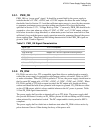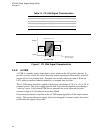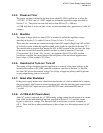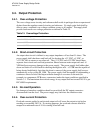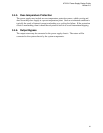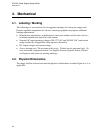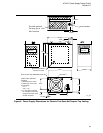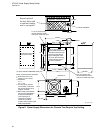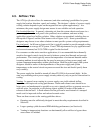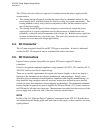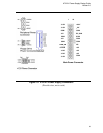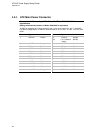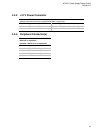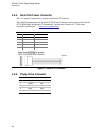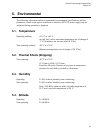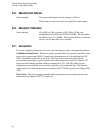
ATX12V Power Supply Design Guide
Version 2.0
31
4.3. Airflow / Fan
The ATX Specification allows for numerous (and often confusing) possibilities for power
supply fan location, direction, speed, and venting. The designer’s choice of a power supply
cooling solution depends in part on the targeted end-use system application(s). At a
minimum, the power supply design must ensure its own reliable and safe operation.
Fan location/direction. In general, exhausting air from the system chassis enclosure via a
power supply fan at the rear panel is the preferred, most common, and most widely
applicable system-level airflow solution. Other solutions are permitted, including fans on
the topside of figure 5 and the Wire harness side of figure 4 or 5. Some system/chassis
designers may choose to use other solutions to meet specific system cooling requirements.
Fan size/speed. An 80 mm or larger axial fan is typically needed to provide enough cooling
airflow through an average ATX system. Exact CFM requirements vary by application and
end-use environment, but 25-35 CFM is typical for the fan itself.
For consumer or other noise-sensitive applications, it is recommended that a thermally
sensitive fan speed control circuit be used to balance system-level thermal and acoustic
performance. The circuit typically senses the temperature of an internal heatsink and/or
incoming ambient air and adjusts the fan speed as necessary to keep power supply and
system component temperatures within specification. Both the power supply and system
designers should be aware of the dependencies of the power supply and system
temperatures on the control circuit response curve and fan size and should specify them
very carefully.
The power supply fan should be turned off when PS_ON# is de-asserted (high). In this
state, any remaining active power supply circuitry must rely only on passive convection for
cooling.
Venting. In general, more venting in a power supply case yields reduced airflow
impedance and improved cooling performance. Intake and exhaust vents should be as
large, open, and unobstructed as possible so as not to impede airflow or generate excessive
acoustic noise. In particular, avoid placing objects within 0.5 inches of the intake or
exhaust of the fan itself. A flush-mount wire fan grill can be used instead of a stamped
metal vent for improved airflow and reduced acoustic noise.
There are three caveats to the venting guidelines above:
• Openings must be sufficiently designed to meet the safety requirements described in
Section 8.
• Larger openings yield decreased EMI-shielding performance (see Section 6).
• Venting in inappropriate locations can detrimentally allow airflow to bypass those
areas where it is needed.



